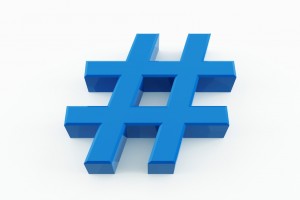October 7, 2014
How to use hashtags correctly
 Hashtags are everywhere in social media. They add meaning and context to our microblogging and can be of great value to brands and businesses when used correctly.
Hashtags are everywhere in social media. They add meaning and context to our microblogging and can be of great value to brands and businesses when used correctly.
Well what exactly is a hashtag?
It’s essentially a word or a phrase that categorize and add context to our message. When used with the ubiquitous ‘#’ sign, these tags link to content that uses the same hashtags and promotes similar content.
There are several ways to use hashtags. People use tags to organize and search a particular topic, to manage and follow events, general context, have a converation with a shared conversation (usually conferences and festivals), to conduct and follow live chats, to promote memes, or for purposes of humor.
Guidelines to effective hashtag use
- Use your hashtags carefully. Don’t just use hashtags randomly. Think about why want to hashtag a particular word and not another. No one want to read a tweet that is shorter than the string of blue links behind it.
- Don’t use hashtags just because you can. Use your hashtags sparingly. Hashtags can be an incredible useful way of discovering and organizing information. When people see too many of them, their eyes glaze over.
- Test your hashtags before using them. When adopt a new tag, you want to be clear that the linked content is relevant to yours, and, in the case of a more specific tag, not being used by someone else for a different purpose.
- Don’t string too many words together. When someone #usesonelonghashtagtodescribetheirtweet, sometimes it can be humorous. But on most occassions, it is a wasted tag that adds noise without adding value. Frequent use of tags this way could result in losing followers. The same advise goes for uncommon acronymns that are obscure or or made up on the spot. You may know what it means, but to your followers, it is gibberish.
- Don’t use inaccurate tags. Don’t add common tags that are not relevant to your post. They are the social media equivalent of spam.
- Be specific. When you want to brand a business, an event, or a meme, you want to be very specific and use that tag consistently. This use of tags is a great way to start a conversation. For example, many conferences and festivals will use a hashtag to track an ongoing conversations within their group. One of the most well known early adopters was #SXSW for the Southwest Music Conference and Festival.
- Spelling and syntax. It goes without saying that an effective hashtag is only a value if it is spelled correctly, with each tag seperated as individual units